Slovenia is the next big European destination to blow up and this is what you need to know to have truly authentic food experiences in this beautiful country.
Nestled between Italy, Austria, Hungary, and Croatia, it’s a crossroads of flavors, borrowing from its neighbors, melding and improving flavor combinations. Whether you’re wandering the medieval streets of Ljubljana, hiking in the Julian Alps, or exploring a tucked-away village in Prekmurje, much of what you’ll find to eat is tied in with the Slovenian landscape – locally sourced food is a priority here. Home cooking and traditional dishes are celebrated. Meanwhile, the little country boasts 10 restaurants with Michelin Stars, including 3-star Hiša Franko.
At Cerca Travel we love taking the paths that aren’t beaten down by tourists so for us, Slovenia is the perfect place to explore.
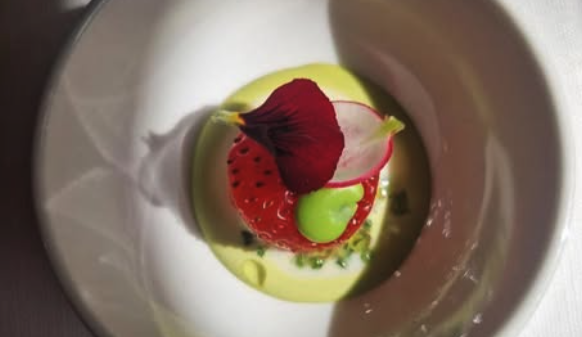
The Short Story of Slovenia
Slovenia’s history is a fascinating blend of influences from powerful European empires, local resilience, and a deep-rooted cultural identity. Though small in size, its strategic location at the crossroads of Central Europe, the Mediterranean, and the Balkans has made it a meeting point for different civilizations for centuries.
Ancient and Medieval Slovenia
The region that is now Slovenia was first inhabited by Illyrian and Celtic tribes before being conquered by the Romans in the 1st century BCE. Roman rule brought infrastructure, trade, and the establishment of cities like Emona (modern-day Ljubljana). After the fall of the Western Roman Empire in the 5th century, the area saw waves of migration, including Slavic settlers in the 6th century.
By the 8th century, Slovenia fell under the rule of the Frankish Empire, and its people were gradually Christianized. The region then became part of the Holy Roman Empire, with powerful feudal lords, like the Counts of Celje, shaping its medieval identity.
Habsburg Rule and National Awakening
For over 600 years, Slovenia was under Habsburg (Austrian) rule, which began in the late 13th century. During this period, Slovenians lived within the larger Austrian and later Austro-Hungarian Empire, contributing to its economy and culture but struggling for national recognition.
The 19th century saw the Slovene national awakening, as intellectuals and writers worked to preserve the Slovenian language and identity amid the pressures of Germanization. This movement laid the groundwork for later efforts toward independence.
20th Century Turmoil: Yugoslavia and Independence
After World War I and the collapse of Austria-Hungary in 1918, Slovenia joined the newly formed Kingdom of Serbs, Croats, and Slovenes (later called Yugoslavia). However, World War II brought occupation by Nazi Germany, Fascist Italy, and Hungary. A strong partisan resistance movement emerged, led by the Slovene communists, contributing to Yugoslavia’s post-war communist state under Josip Broz Tito.
After Tito’s death in 1980, Yugoslavia began to fracture, and in 1991, Slovenia became the first republic to declare independence, following a brief Ten-Day War against the Yugoslav army.
Modern Slovenia: A European Nation
Since gaining independence, Slovenia has rapidly modernized and integrated into Europe. It joined the European Union and NATO in 2004 and became the first former Yugoslav republic to adopt the euro in 2007. Today, Slovenia is known for its truly breathtaking landscapes and commitment to sustainability, both in tourism and cuisine.
How did all this history influence the food you’ll eat on your trip to Slovenia? Here we go…
1. Štruklji
Slovenia’s Comfort Food
OMG we love dumplings. All dumplings. Štruklji are rolled dumplings filled with anything from cottage cheese and tarragon to walnuts and poppy seeds. They have been a staple of Slovenian kitchens for over 400 years. Originally a dish for the upper class, štruklji gradually became a favorite across all social classes, evolving into both a savory and sweet delicacy.
During times of scarcity, štruklji were a practical dish, stretching flour, butter, and eggs into something satisfying and delicious. Today, they remain a must-have at family gatherings and celebrations.
Feed Me Dumplings:
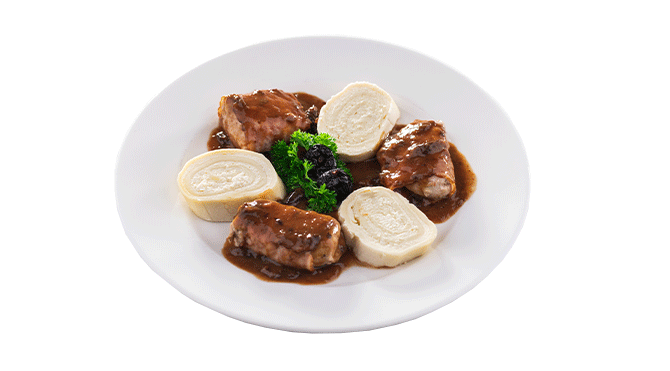
For a classic take, head to Gostilna Sokol in Ljubljana. They also have a dessert version on the menu.

If you want a more innovative version, Hiša Franko, the world-famous restaurant by Ana Roš, occasionally reimagines štruklji on its tasting menu. Almost everything on the menu is sustainable and local, adding a green star to Franko’s 3 Michelin stars.
Hands-on Experience: Join a štruklji-making cooking class at Bled Cooking Class in Bled, a lake-side town at the foothills of the Alps.
2. Bograč
The Slovenian-Hungarian Stew
Bograč is a rich, paprika-laced meat stew originating from Prekmurje, Slovenia’s easternmost region. Historically, this dish was prepared by Hungarian-speaking Slovenes, who slow-cooked it over an open fire while tending to livestock. Over time, bograč became an essential dish at Slovenian festivals and family gatherings.
Unlike traditional goulash (the famous Hungarian stew steeped in Paprika), bograč includes at least three types of meat, usually beef, pork, and venison, making it heartier and more complex in flavor. Each family recipe has its secret twist, but all versions rely on slow cooking to deepen the taste.
Where to have it:

Gostilna Rajh in Murska Sobota serves up an authentic bograč experience, delivered in a traditional kettle. The restaurant has a dedicated sustainability initiative and has earned the “Green Slovenia” badge for establishments that focus on local and eco-friendly sourcing.
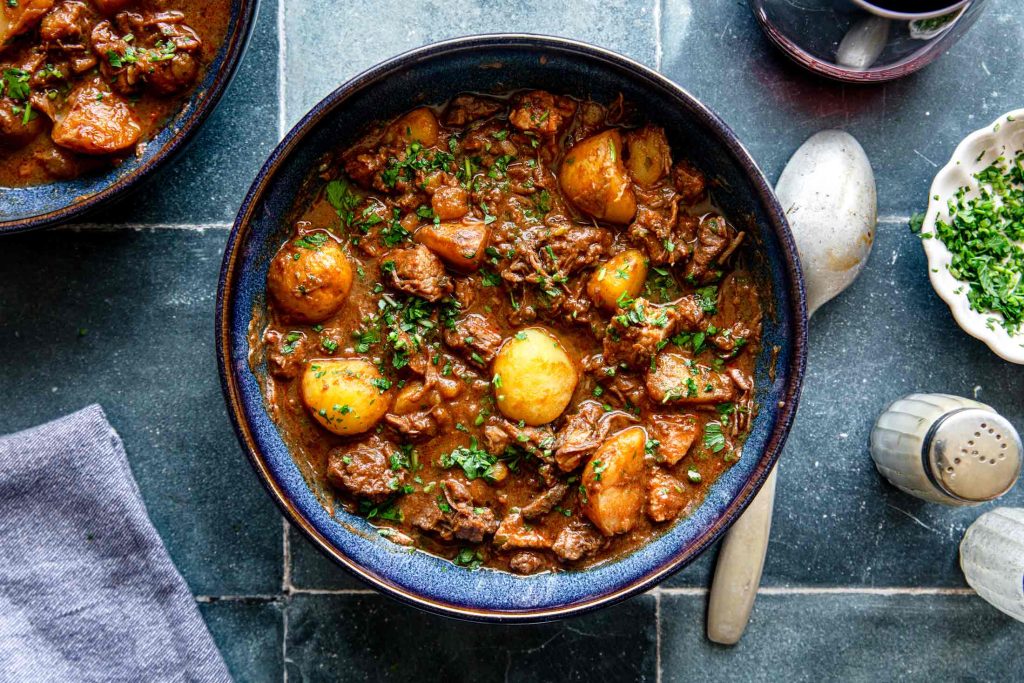
Hands-on Experience: Every August, Lendava hosts the Bogračfest, where teams compete to cook the best bograč in giant kettles.
3. Kranjska Klobasa
The Legendary Carniolan Sausage
Kranjska klobasa, or Carniolan sausage, is Slovenia’s most famous sausage, protected by the EU’s geographical indication status. Its origins date back to the late 1800s in the Gorenjska region, where butchers perfected the combination of pork, bacon, salt, and garlic – the first publicly recorded recipe was published in 1896.
But the tradition of making Carniolan sausages was passed down through generations as a way to celebrate Kolin, the traditional pig slaughter in Slovenia and other Central European countries. This centuries-old rural tradition is an important communal event, typically taking place in late autumn or early winter when the cold weather helps preserve the meat.
Give Me Meat:
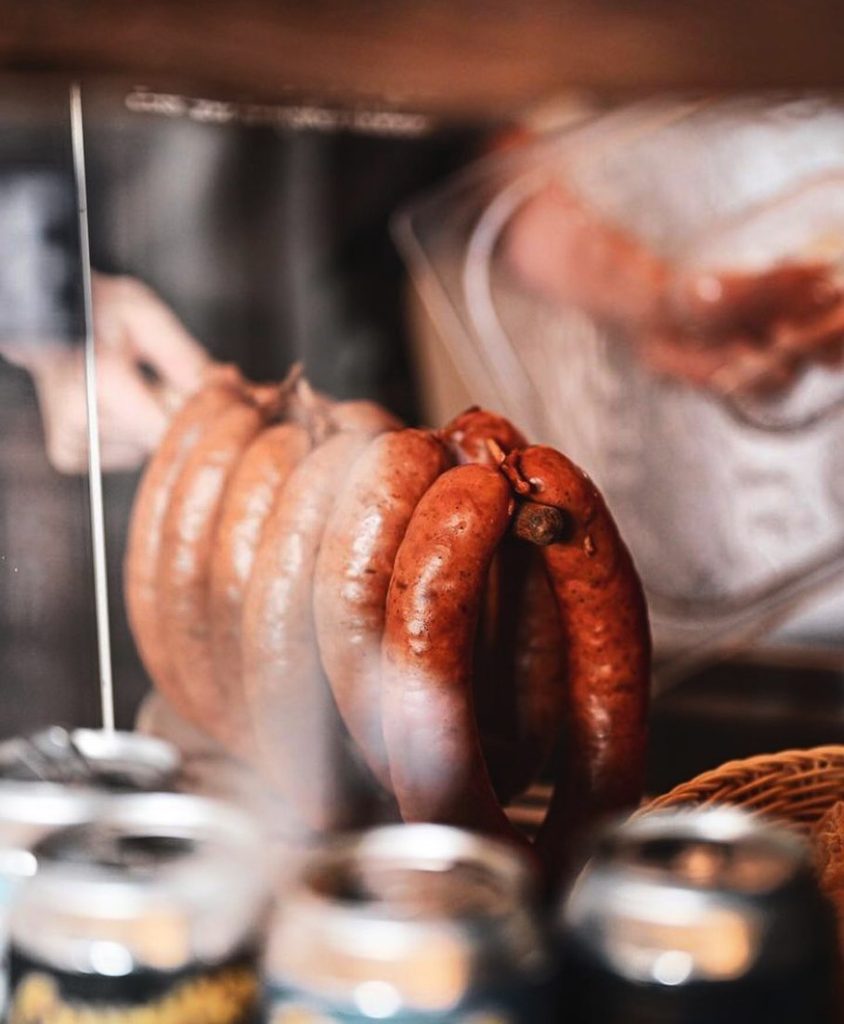
For an authentic taste, try Klobasarna in Ljubljana’s old town.
4. Piran Sea Bass
A Taste of the Adriatic
The Adriatic Sea is a lifeline for Slovenia’s coastal cuisine. Piran sea bass, raised in the clean waters of the Sečovlje salt pans, is a symbol of sustainable aquaculture. The fish is renowned for its delicate flavor, thanks to the mineral-rich water in which it grows.
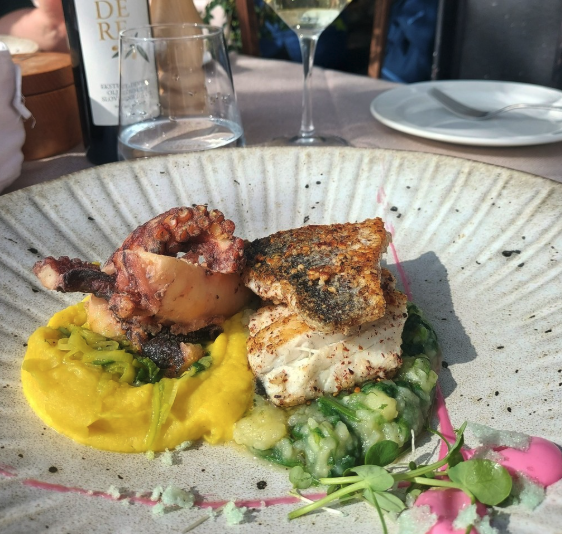
Restavracija Hotela Marina (Izola) – this waterfront hotel and spa houses a restaurant with delicious fresh catch that you can eat while looking out at the fishing boats in the harbor.
Rizibizi (Portorož beach) – famous for their use of local Istrian truffles and sea bass caught in the nearby waters, both of which appear on all of their tasting menus.
Hands-on Experience: Take a tour of Fonda Fish Farm, where most of the country’s Piran Sea Bass is responsibly farmed in sheltered waters next to the Sečovlje Salina Nature Park. Sign up for a 2 hour workshop where you’ll learn and taste various preservations of sea bass. The workshop is currently held on Tuesdays.
5. Potica
Slovenia’s Festive Cake
Potica (pronounced po-tee-tsa) is the queen of Slovenian desserts. This rolled pastry, filled with walnuts, tarragon, honey, or poppy seeds, is a fixture of Easter and Christmas celebrations.
It evolved from early Slavic and Central European nut-filled pastries, but Slovenia refined it into a signature dish. By the 16th century, it was documented in Slovenian cookbooks, cementing its status as a national treasure.
Historically, potica was a luxury, made only during major religious holidays and feasts. The dough was expensive, requiring high-quality flour, eggs, butter, and sometimes even honey or cream. The filling—especially when made with walnuts or poppy seeds—symbolized prosperity and abundance. Over time, every Slovenian family developed its own recipe, passing it down through generations. Today there are 80 documented varieties of this traditional pastry.
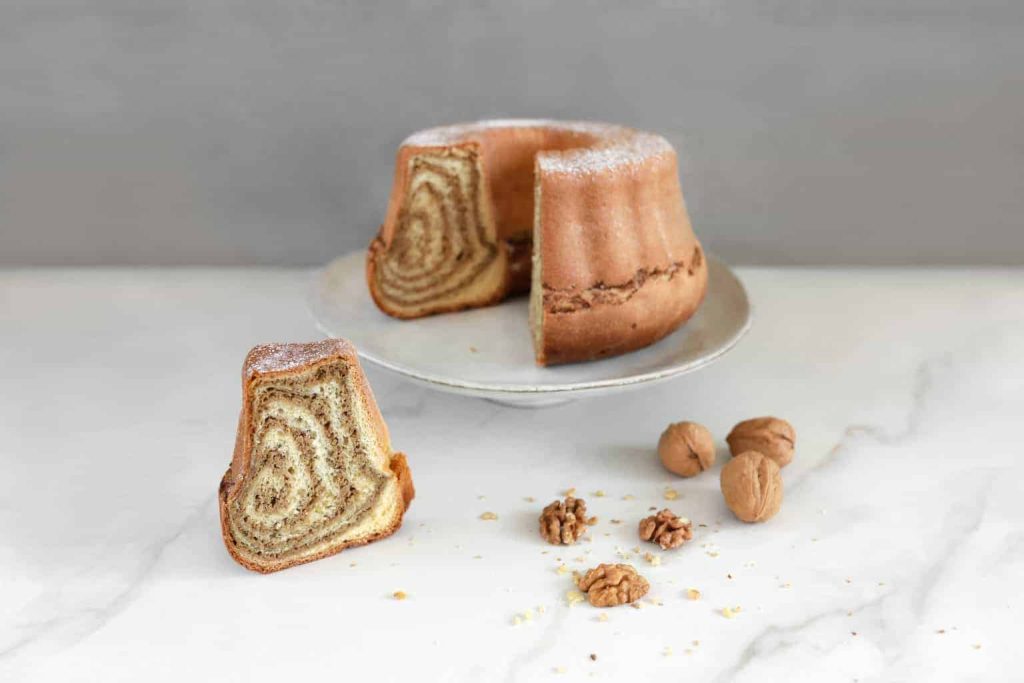
Le Potica (Ljublijana) – a bakery dedicated to this cake, with varieties including tarragon, plum, and raspberry.
Pekarna Osem in Ljubljana is a small, locals favorite bakery, filled with traditional pastries and bread.
6. Matevž
Slovenia’s answer for mashed potatoes
Matevž (pronounced mah-tevzh) is a traditional Slovenian peasant dish made from mashed beans and potatoes, with garlic and lard or olive oil, often served as a side dish with sauerkraut, sausages, or roasted meat. It originated in central Slovenia, particularly in the Alpine and Dolenjska regions, where simple, nutritious, and filling foods were essential for hardworking farmers and shepherds.
Matevž is named after a folk legend about a poor farmhand named Matevž, who supposedly created the dish when left with nothing but beans and potatoes. Over time, it became a beloved comfort food, especially in winter, when fresh produce was scarce.
Today, matevž remains a staple of Slovenian home cooking, often appearing on traditional menus at inns and gostilnas (local taverns).
I Need Some Comfort Food:

Gostilna pri Boštjanu (Škofja Loka) – tucked into a small town, this place loves to do traditional Slovenian dishes, heavy on the meat from the mountains and produce from the forests and valleys, with sauerkraut and turnips and dumplings, goose and local duck, all to be eaten while looking out at snow-capped peaks.
Looking for more off-the-beaten track flavors from around the world? Cerca Travel is your destination.